GBC Beginnings: The Birth of LEGO Great Ball Contraptions
/If you have ever been to a LEGO convention, you are probably familiar with the noise of hundreds of LEGO balls rattling through a continuous chain of mechanical madness. But do you actually know where the tradition originally came from? As a GBC (great ball contraption) builder myself, I was quite curious about this question because I didn't even have the answer. So I did some research and this is what I found. Let's go back in time to see where the idea of GBC came from and how it all started.
Ping Pong Ball Handoff
It all started with a ping pong ball. In 2004, The Lafayette LEGO Robotics Club (LafLRC) created a challenge called the “Ping Pong Ball Handoff”. The idea was simple: receive a ping pong ball from the robot to your left and pass it to the robot on your right.
However to make a smoothly running chain of LEGO ping pong ball transporting robots, there had to be some rules in place. The rules were quite similar to what we have today in modern LEGO GBC. The robot needed to have an “inbox” with a specific dimension and needed to be placed on the left side of your machine.
The biggest difference to what we have today was the speed of the modules: this was 30x times slower than what we are used to today. So only one ping pong ball every 30 seconds compared to one ball every second we currently have as a standard in GBC. I sadly could not find any videos or pictures of this.
SMART’s Crate Contraption
In 2004 David Schilling, Gus Jansson and Mark Kenwortht held a competition called “SMART's Crate Contraption”. There is very little information about this competition but from looking at the pictures and video, I think the idea was to make a machine that moves a standardized crate around from module to module. From looking at the video you can already see that some builders made a train module, others made small forklifts that would pick up the crates and transport them along a guided track.
The First-Ever Great Ball Contraption
Steve Hassenplug was the person that coined it all together. Being inspired by the “Ping Pong Ball Handoff” and the “SMART's Crate Contraption,” he came up with the great ball contraption. On a forum post back in 2005, he wrote:
“In an attempt to provide Technic & Mindstorms builders the same cooperative building opportunity that's available to Moonbase, Castle, and Town/Train builders at Brickfest, we present to you: The Great Ball Contraption… This device will be a combination of Rube Goldberg and the Bucket Brigade, passing soccer balls from one module to the next, where they will be pushed, pulled, lifted, flipped, shot, rolled, dropped, etc... before being passed again.”
In his forum post, he shared video material of this first-ever LEGO GBC
Steve ends his forum post by writing the following: “Keep in mind, that was built by me, and just a couple friends. Imagine the madness when AFOLs from all over contribute their modules to one of the greatest works of moving LEGO artwork ever assembled…”
And so GBC was born! This video is something special if you build GBC seeing the concept work for the first time must have been a great sight to see! Also by looking at the replies on the forum post people back then were amazed at the concept and started to build their own modules. But it would not have worked without the rules that are in place to make them all work together.
The GBC Standard
Modern GBC loops wouldn't work as well as they do without standardization. They are essentially the biggest, longest-running collabs of any LEGO fan convention. Thankfully, Steve Hassenplug also shared the ruleset for GBC also known as the “GBC Standard” which is crucial to make every module work together with the next one. Here are the key tenets of the standard:
Each module should have an in-basket and will move balls to the next module's in-basket, which must be directly in line.
The in-basket should be 10 studs by 10 studs (outside dimension) with an 8x8 opening and should be 10 bricks (beams) tall.
The front of the basket should be 32 studs from the back of the module. This will allow all modules to be lined up against a wall. The back of the module CAN be closer to the basket, but not farther.
The in-basket should be located on the left side of the module, and the output should go to the right.
There are no size limits beyond those listed.
Each module should be able to accept balls at an average rate of 1 ball per second. Balls can be passed continuously or in a batch. A batch should not exceed 30 balls.
Summary of the GBC Standard designed by me and Fredrik Hareide
To this day we still use the same rules Steve created back in 2004. Back then, Steve already knew the potential of his concept, using the now-famous soccer and basketballs to enable technical-minded people to build together a great mechanical artwork. He just started a new kind of LEGO theme that would inspire lots of builders worldwide. People on the forum responded with excitement about his new concept and wanted to join the loop (a term we use in GBC which means you participate in the GBC layout—stay tuned for a GBC-specific glossary coming up in a later month).
The First Public Loop
The first public GBC loop was at BrickFest 2005 at George Mason University in Arlington, Virginia with 17 modules built by 10 different builders. The layout consisted of a GBC train, pneumatic modules and mechanical modules. The variety of different modules made it super interesting and entertaining to look at. Balls were pushed, pulled, lifted, flipped, shot, rolled and dropped, exactly the way Steve predicted.
The idea caught on quickly and people would see these videos on forums and were inspired to build modules on their own. When I asked Philo Hurbain in a private message about seeing the video for the first time, he said, “The idea looked so great that I had to try. The tough part was the bootstrap phase, get enough modules to create a loop!” Philo was the first person to bring GBC to Europe.
Here are some pictures from the first public GBC loop:
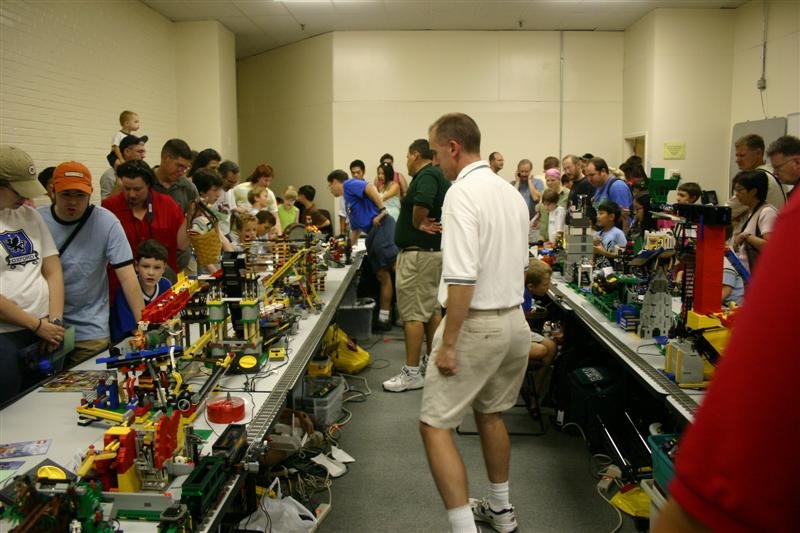
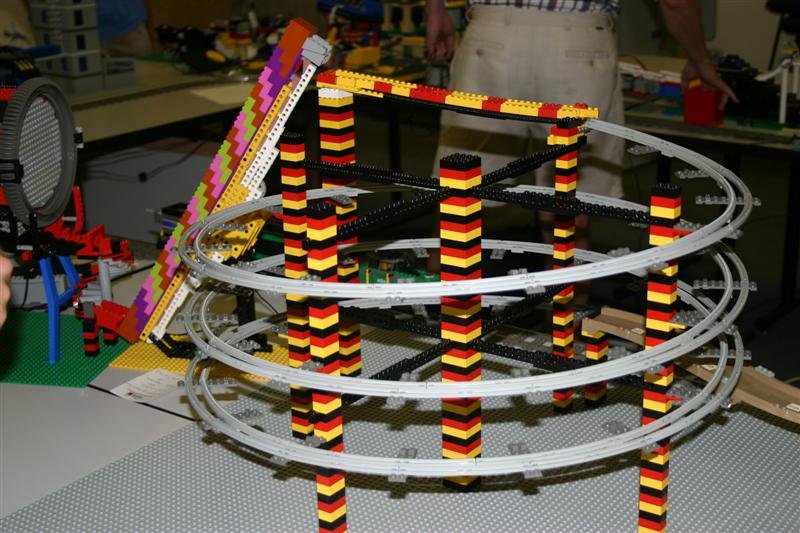
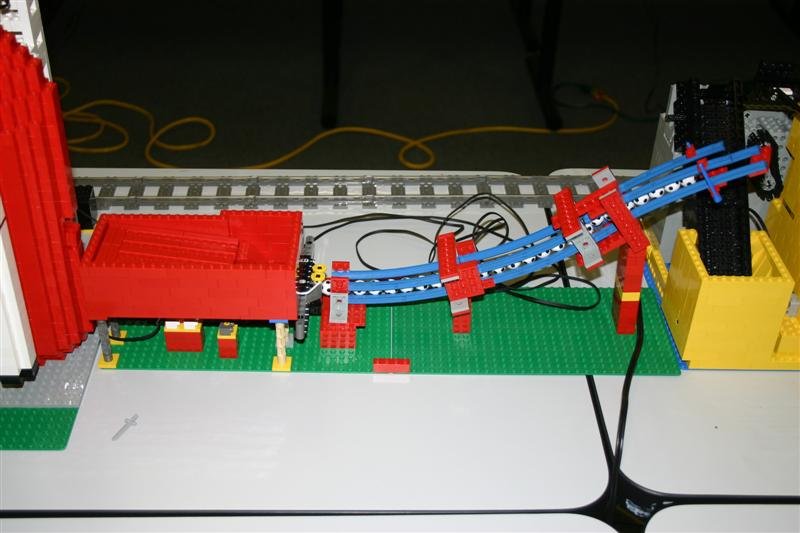
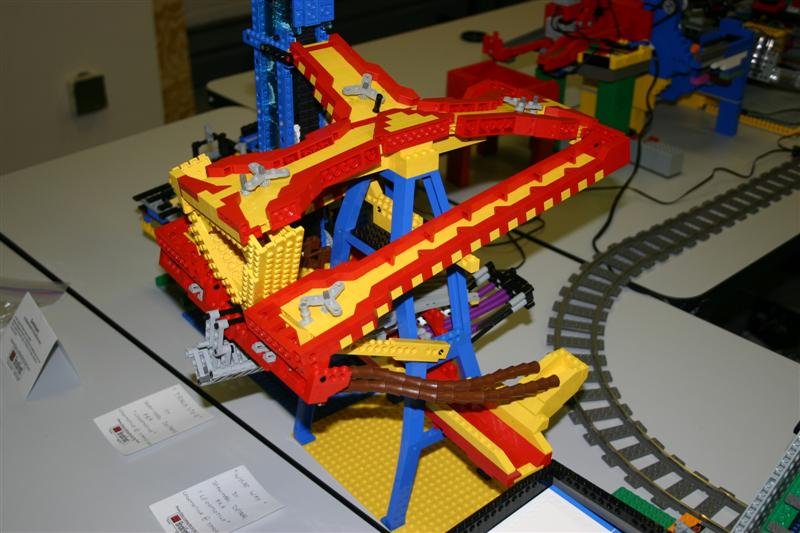
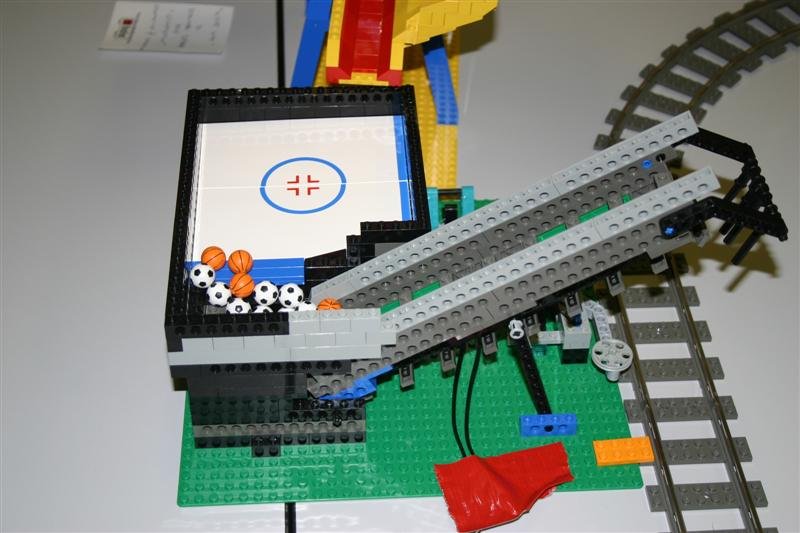
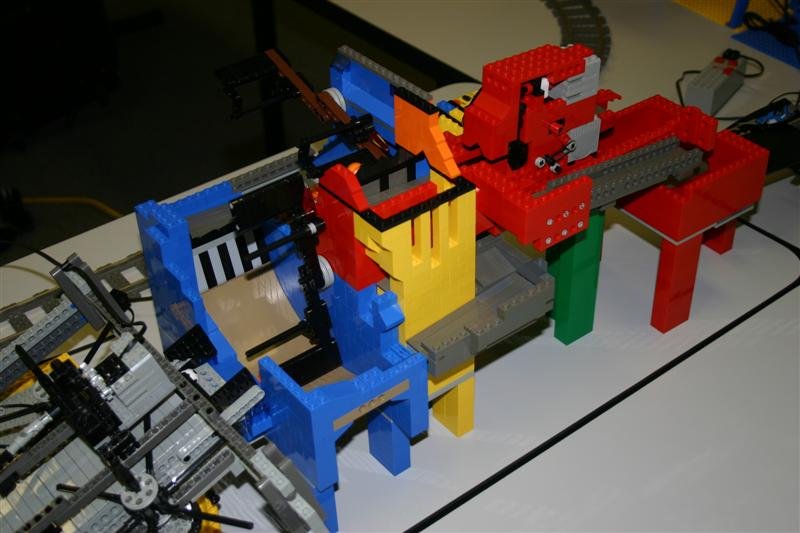
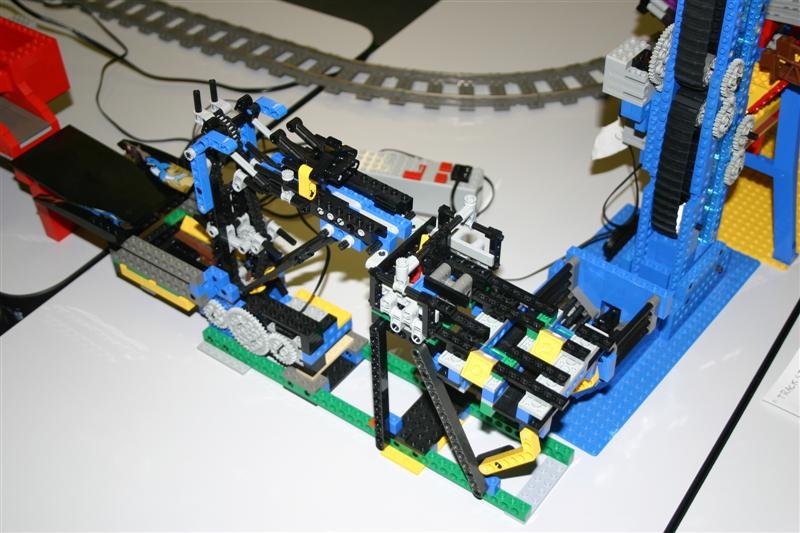

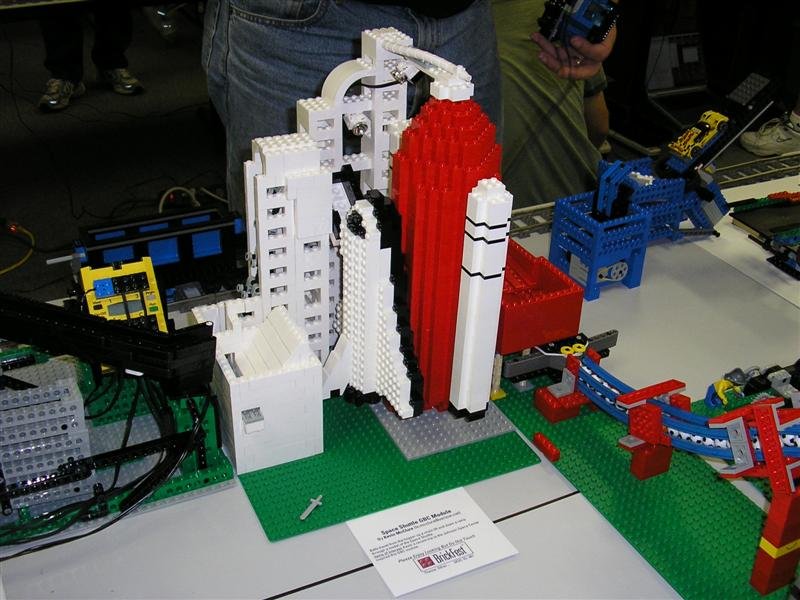
It Takes Balls
This article really gave me an insight into to early days of GBC. The people who began with this concept had to invent the wheel. Common mechanisms we are used to today weren’t discovered back then. So it must have been a lot more trial and error to get things to work. I think it’s safe to say that building a great ball contraption back in those days must have been really tough. After writing this article I have way more respect for the people who were the first GBC builders!
Without those crazy people back in 2004 there might not have been a continuing project where Technic builders could collaborate at conventions like they do today—and to be honest, I am not sure if I would even be involved in LEGO if it was not for GBC. Building GBC modules is a way to express myself—other people may find that same sense of purpose by building castles or cities. For me, it’s the grind to make a perfect mechanism and trying to come up with a concept that has never been done before!
Over the years layouts have gotten bigger and bigger (as seen in the hundreds of videos of them online like the one below) and the modules themselves have become more varied and even artistic. So the next time when you are going to a LEGO convention and hear those rattling balls that never stop, now you know it is part of a longstanding tradition almost two decades old and is only getting better with each loop.
Best of BrickNerd - Article originally published October 20, 2022.
How have Great Ball Contraptions affected you as an AFOL? Let us know in the comments below.
Do you want to help BrickNerd continue publishing articles like this one? Become a top patron like Marc & Liz Puleo, Paige Mueller, Rob Klingberg from Brickstuff, John & Joshua Hanlon from Beyond the Brick, Megan Lum, Andy Price, Lukas Kurth from StoneWars, Wayne Tyler, Dan Church, and Roxanne Baxter to show your support, get early access, exclusive swag and more






















